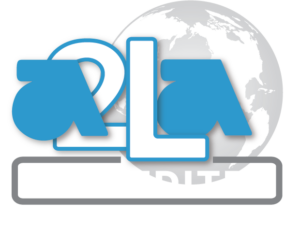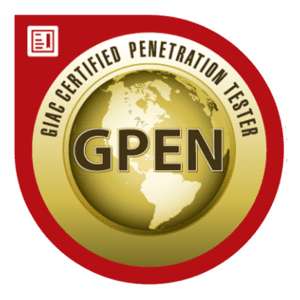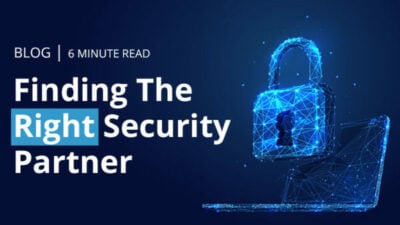Compliance Services
PCI Services
NIST Assessments
Additional Services
Compliance Services
NIST Cybersecurity Framework Assessment
The NIST Cybersecurity Framework (CSF) is an excellent starting point for any security program. Our expert assessors use NIST CSF to help you identify and resolve weaknesses in your organization’s security program.
Service Overview
NIST Cybersecurity Framework (CSF)
The NIST Cybersecurity Framework was originally published in 2014, following a collaborative process involving industry, academia, and government agencies, as directed by presidential executive order. It is a set of optional standards, best practices, and recommendations for improving cybersecurity at the organizational level.
In contrast to the NIST Special Publications 800-53 and 800-171, NIST Cybersecurity Framework was designed for private sector organizations. This framework is intended to provide guidance for non-governmental organizations to assess and improve their ability to prevent, detect, and respond to cyber-attacks.
Our Approach
Our security and compliance experts partner with your team to assess your organization’s security program against the NIST CSF framework. Our step-by-step process will identify any weaknesses that need to be addressed, and our team provides thorough recommendations and guidance on how to bring your program in line with NIST CSF guidelines.
Key Benefits
Identify and fix weaknesses in your security program
Maintain compliance with industry frameworks
Maximize the utility of security resources
Control cyber risk and prevent breaches
The 3 Components of NIST CSF Framework
Framework Core, Implementation Tiers, and Profiles.

Component 1: Framework Core
The core component of NIST CSF is “a set of activities to achieve specific cybersecurity outcomes, and references examples of guidance to achieve those outcomes.” It’s broken down into four elements:
Functions
There are five functions used to organize cybersecurity efforts: identify, protect, detect, respond, and recover. Together, these form a top-level approach to securing systems and responding to threats.
Categories
Each function contains categories used to identify specific tasks or challenges. For example, the protect function could include access control, regular software updates, and anti-malware programs.
Subcategories
These are further divisions of categories with specific objectives. The software updates category could be divided into tasks such as ensuring Windows updates are configured properly.
Informative References
Documentation, steps for execution, standards, and other guidelines fall into this category. A prime example in the manual Windows update category is a document outlining steps to manually update Windows PCs..

Component 2: Implementation Tiers
There are four tiers of implementation, and while CSF documents don't consider them maturity levels, the higher tiers are considered a more complete implementation of CSF standards.
Tier 1
Partial Implementation
Organizations that have an ad-hoc and reactive cybersecurity posture. They have little awareness of organizational risk and any plans implemented are often done inconsistently.
Tier 2
Proactive Point
Risk-informed organizations may be approving cybersecurity measures, but implementation is still piecemeal. They are aware of risks, have plans, and have the proper resources to protect themselves but haven’t quite gotten to a proactive point.
Tier 3
Repeatable
The third tier is called repeatable, meaning that an organization has implemented CSF standards company-wide and are able to repeatedly respond to crises. The policy is consistently applied, and employees are informed of risks.
Tier 4
Adaptive
This tier indicates total adoption of the CSF. Adaptive organizations aren’t just prepared to respond to threats—they proactively detect threats and predict issues based on current trends and their IT architecture.

Component 3: Profiles
Profiles are both outlines of an organization's current cybersecurity status and roadmaps toward CSF goals. NIST said having multiple profiles—both current and goal—can help an organization find weak spots in its cybersecurity implementations and make moving from lower to higher tiers easier. Profiles also help connect the functions, categories, and subcategories to business requirements, risk tolerance, and resources of the larger organization it serves. Think of profiles as an executive summary of everything done with the previous three elements of the CSF.

Component 3: Profiles
Profiles are both outlines of an organization's current cybersecurity status and roadmaps toward CSF goals. NIST said having multiple profiles—both current and goal—can help an organization find weak spots in its cybersecurity implementations and make moving from lower to higher tiers easier.
Profiles also help connect the functions, categories, and subcategories to business requirements, risk tolerance, and resources of the larger organization it serves. Think of profiles as an executive summary of everything done with the previous three elements of the CSF.
Why Choose MegaplanIT For You NIST Frameworks?
Effective Collaboration
For most organizations, the NIST Cybersecurity Framework is an excellent basis for improving risk-based security. Framework benefits include:
⦁ Assistance with regulatory compliance
• Potential future improvements in legal exposure
• Effective measurement, monitoring, and communications of security posture
Business Requirement for Third Party Suppliers
NIST CSF can be used as a business requirement for companies that provide services to critical infrastructure owners, operators, and providers.
⦁ Protect against potential weak links in the supply chain.
⦁ laying the groundwork for future requests for proposals (RFPs)
⦁ Partnerships that require NIST CSF compliance.
Maintain Regulatory Compliance
Many organizations are required to meet multiple regulations with overlapping and conflicting requirements. To avoid penalties from regulatory bodies, many are forced to maintain several compliance documents describing how the organization is complying with each requirement.
The standard developed by NIST CSF enables auditors to evaluate security programs and controls in a standardized format, eliminating the need for multiple security compliance documents.
Spend Security Budgets Efficiently
In an environment where cyber threat information is not readily available, organizations struggle to understand how much security is enough. This leads to organizations implementing unnecessary cybersecurity protections.
With NIST CSF, sensible standards can more easily be established. Organizations can use these standards to determine the appropriate level of security protections required, ensuring efficient utilization of security budgets.
When You Work With MegaplanIT
Discover the fast and cost-effective security services backed by our experienced and certified professionals.

Chief Technology Officer
Payments and Software Company
For the past four years, we have partnered with MegaplanIT for our annual PCI-DSS Level 1 audit. In addition to that annual work, we have also found them to be a great source of advice and best-practice recommendations; their expertise has helped us conceptualize and plan the robust, secure systems that our customers count on each day. Their team is a pleasure to work with, and we highly recommend their people and services.
Our Security Consultant was extremely well organized, knowledgeable , personable and responsive. Our IT Director was extremely satisfied. I shopped for year one and MegaplanIT was the most reasonable and all-encompassing and you felt they were in it for a long term relationship. Do not hesitate to hire MegaplanIT they are very approachable and responsive. I heartily recommend them

CEO
Travel Related Technology and Payment Solutions

CEO
Payment Technology Merchant Acquirer
From sales to the final report (and everything in between), working with MegaplanIT has been a pleasure. Their vast PCI knowledge, along with their fast response times far exceeded my expectations. They truly understand PCI, and how that applies to our virtual environment. They are a great partner, and always try to make themselves available when we need them. A truly professional and dedicated team!
Industry Leading Certified Experts
Managed Security, Managed Compliance, and Security Consulting all under one roof make us the leader in asset protection.





Make Our Team, Your Team!
Our innovative IT security and compliance solutions are designed to deliver customized, cost-effective service on time—because your priorities are our priorities. With a highly qualified team of PCI-DSS QSAs, Penetration Testers, and Information Security Consultants here at MegaplanIT, we will assess your unique company and business environment and design a path to security that will fit all of your needs.
Why Use the NIST Cybersecurity Framework?
Effective Collaboration
For most organizations, the NIST Cybersecurity Framework is an excellent basis for improving risk-based security. Framework benefits include:
⦁ Effective measurement, monitoring, and communication of security posture
⦁ Potential future improvements in legal exposure
⦁ Assistance with regulatory compliance
Business Requirement for Third Party Suppliers
NIST CSF can be used as a business requirement for companies that provide services to critical infrastructure owners, operators, and providers. Doing so will help protect against potential weak links in the supply chain.
Assessments based on the framework help organizations better understand their risk-based cybersecurity posture, laying the groundwork for future requests for proposals (RFPs) and partnerships which require NIST CSF compliance.
Maintain Regulatory Compliance
Many organizations are required to meet multiple regulations with overlapping and conflicting requirements. To avoid penalties from regulatory bodies, many are forced to maintain several compliance documents describing how the organization is complying with each requirement.
The standard developed by NIST CSF enables auditors to evaluate security programs and controls in a standardized format, eliminating the need for multiple security compliance documents.
Spend Security Budgets Efficiently
In an environment where cyber threat information is not readily available, organizations struggle to understand how much security is enough. This leads to organizations implementing unnecessary cybersecurity protections.
With NIST CSF, sensible standards can more easily be established. Organizations can use these standards to determine the appropriate level of security protections required, ensuring efficient utilization of security budgets










